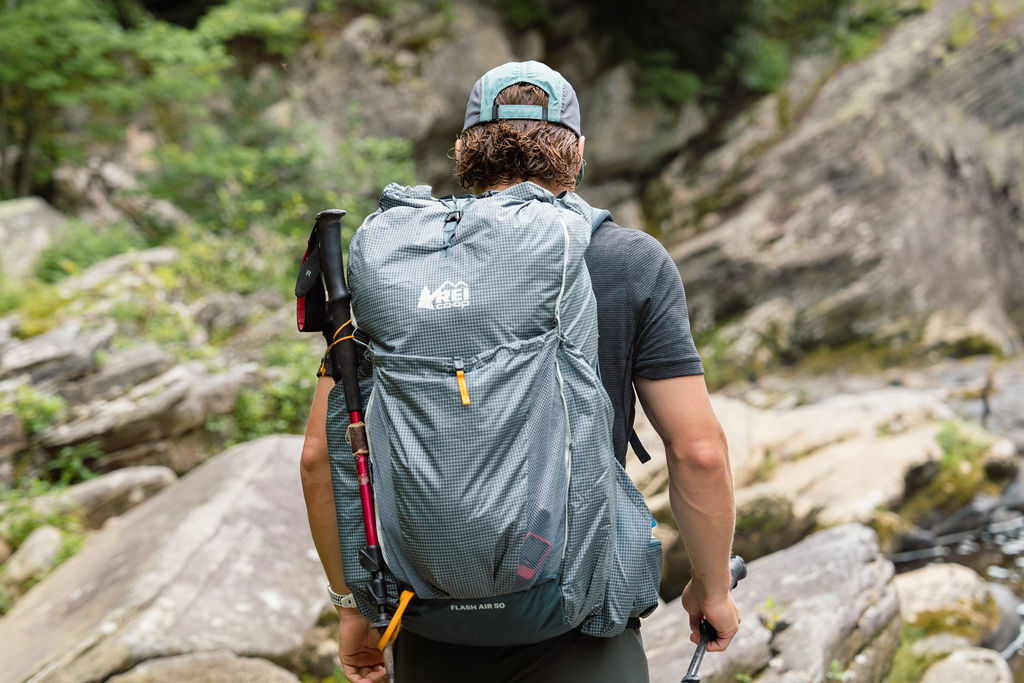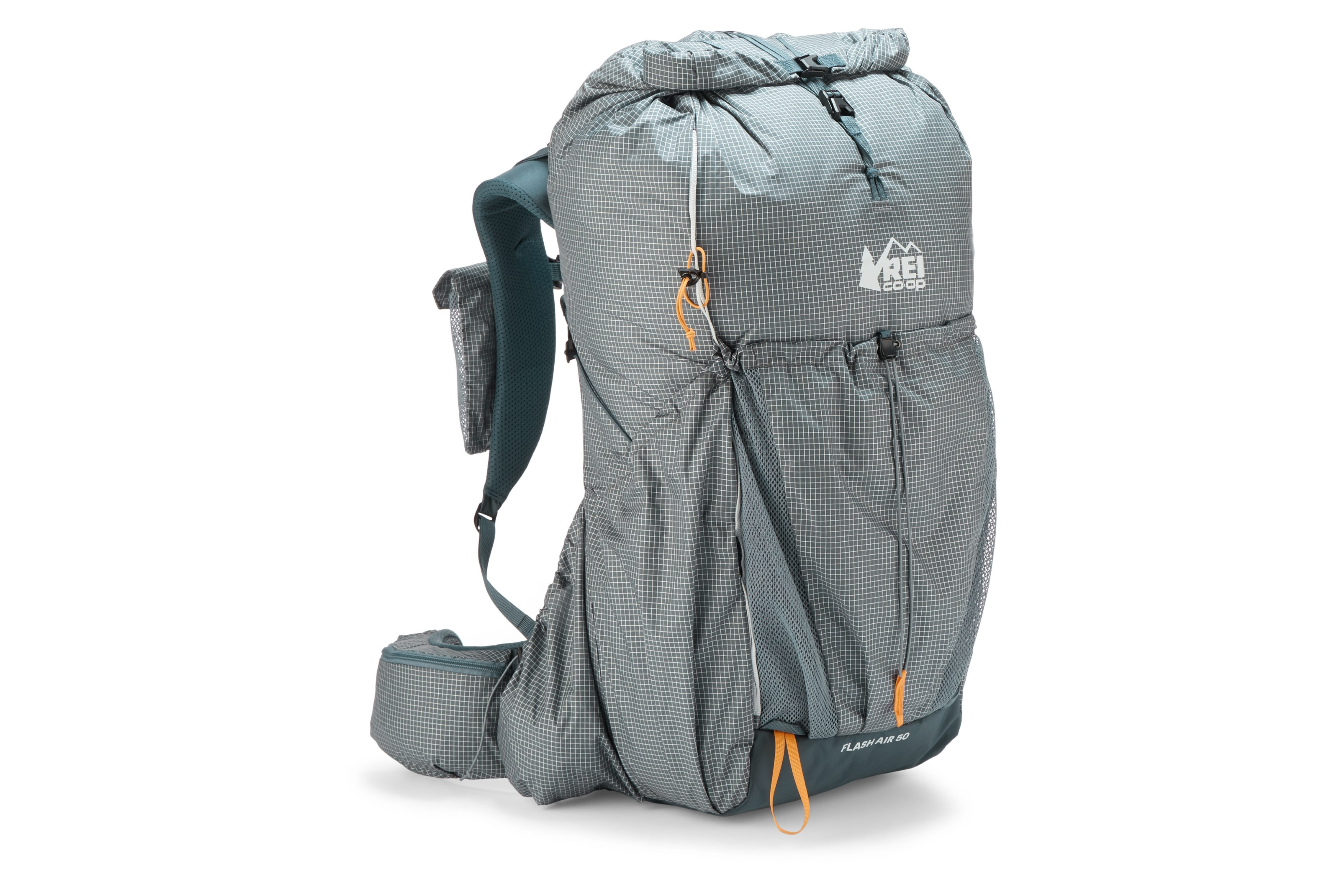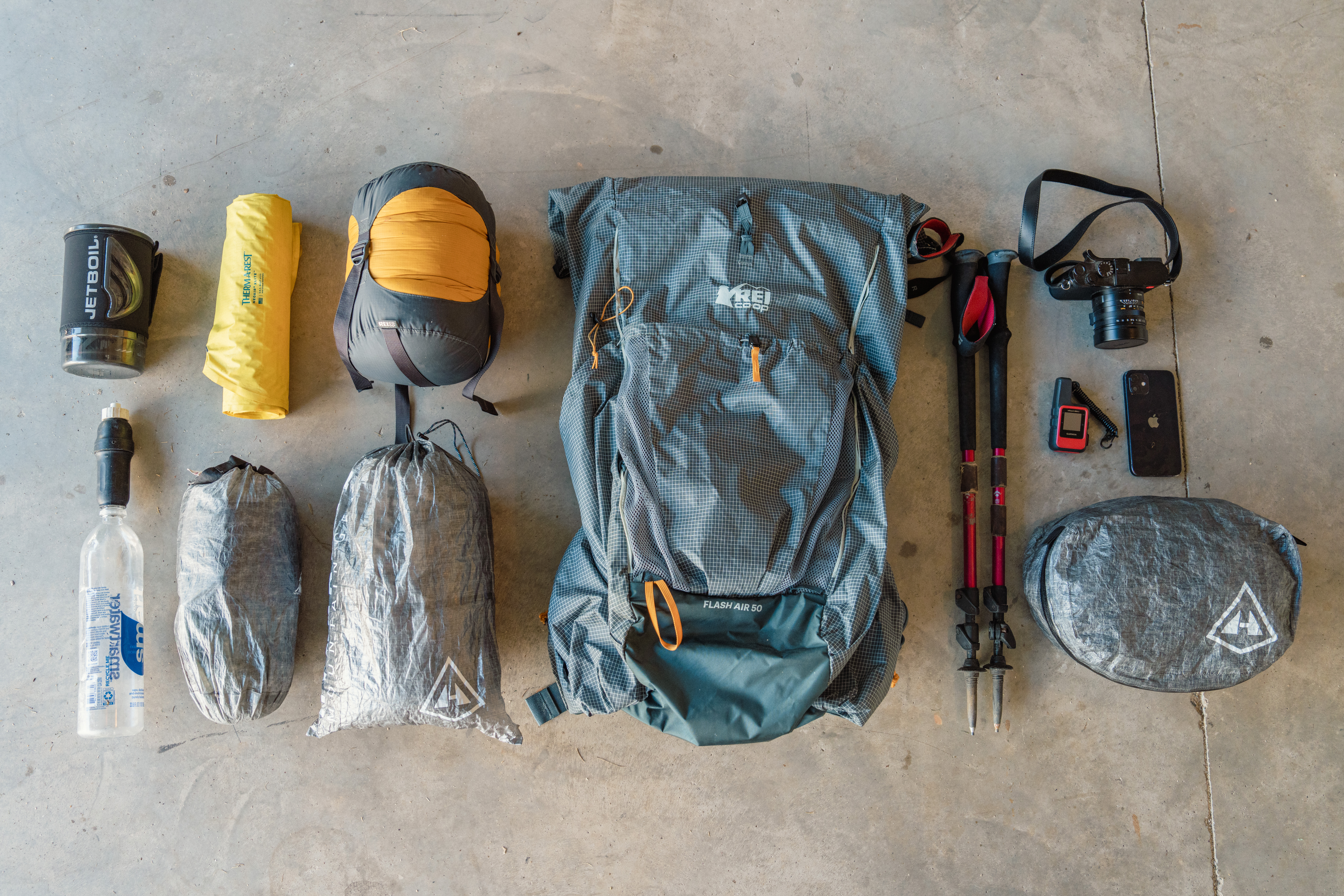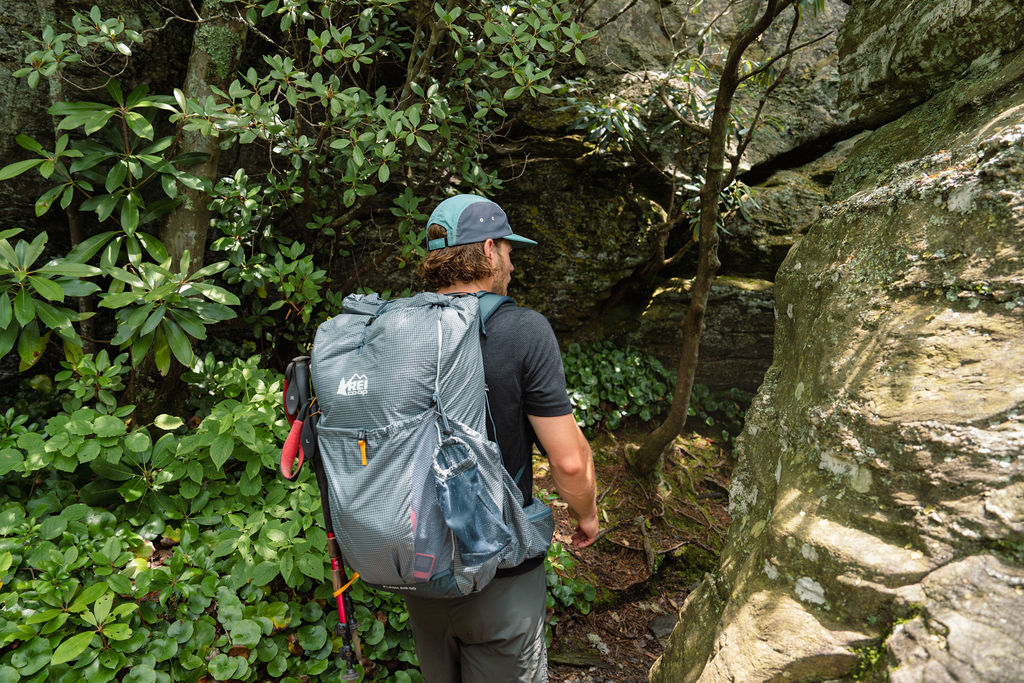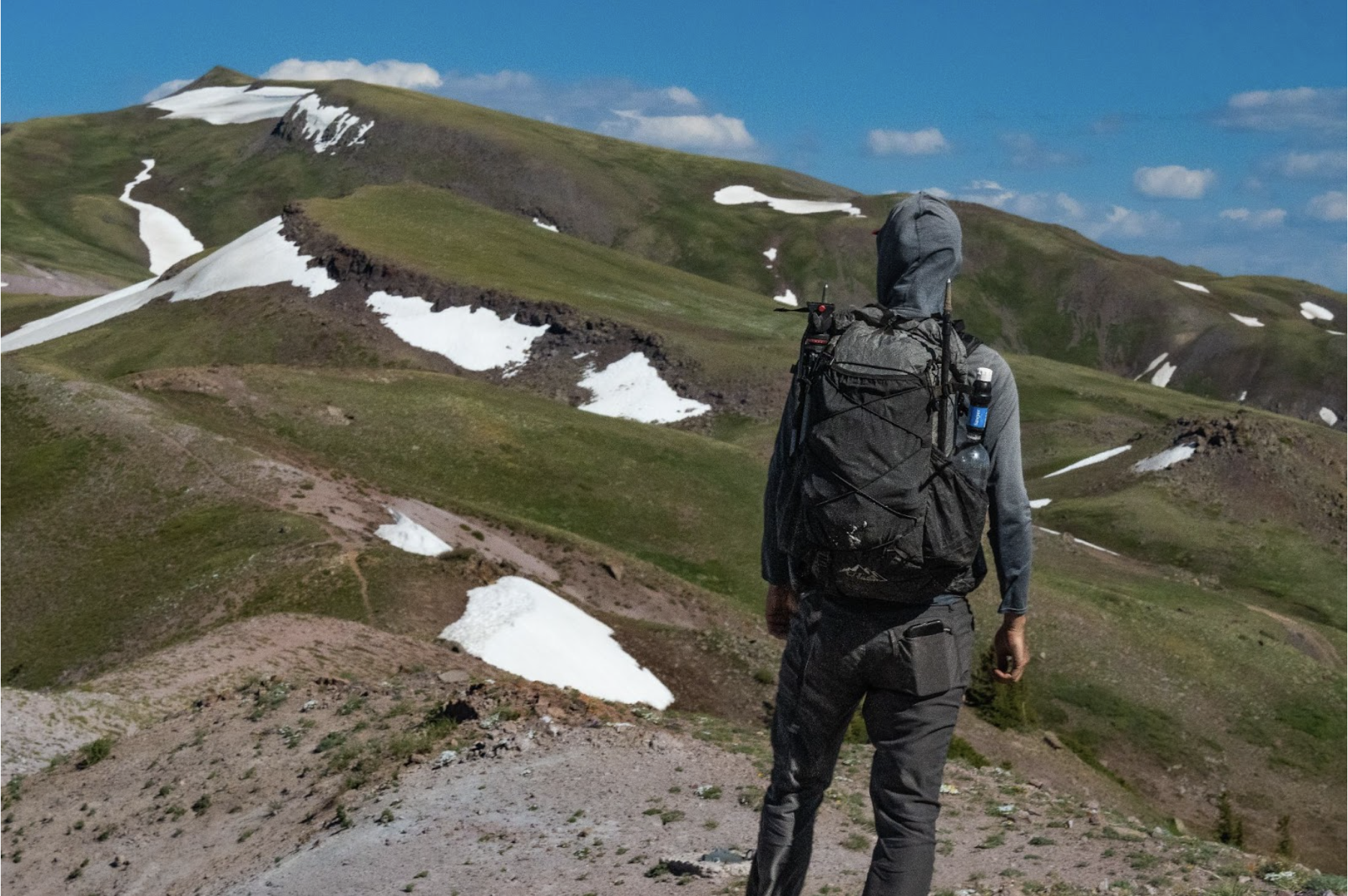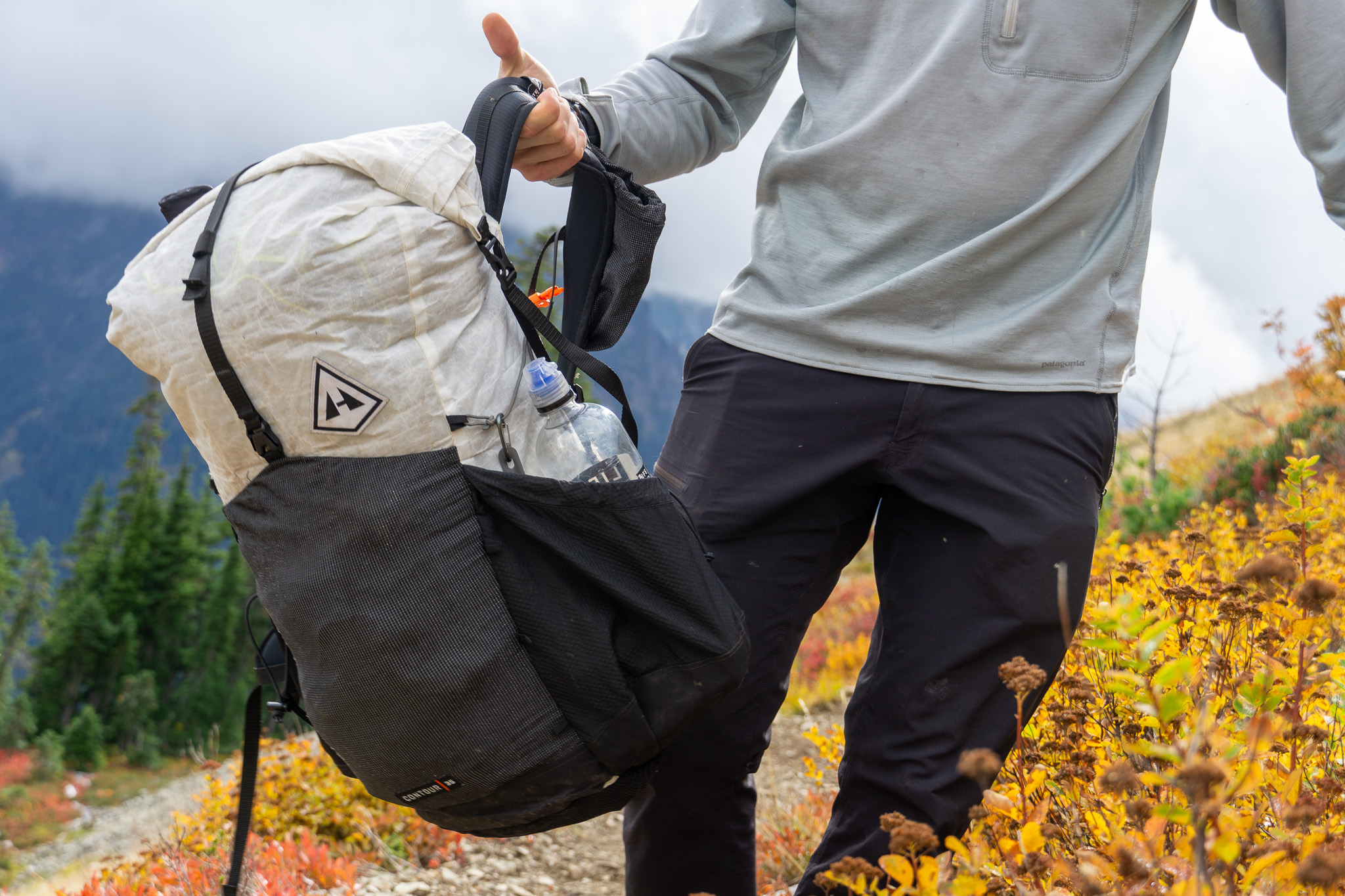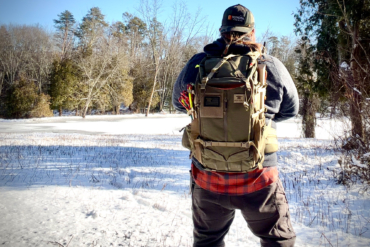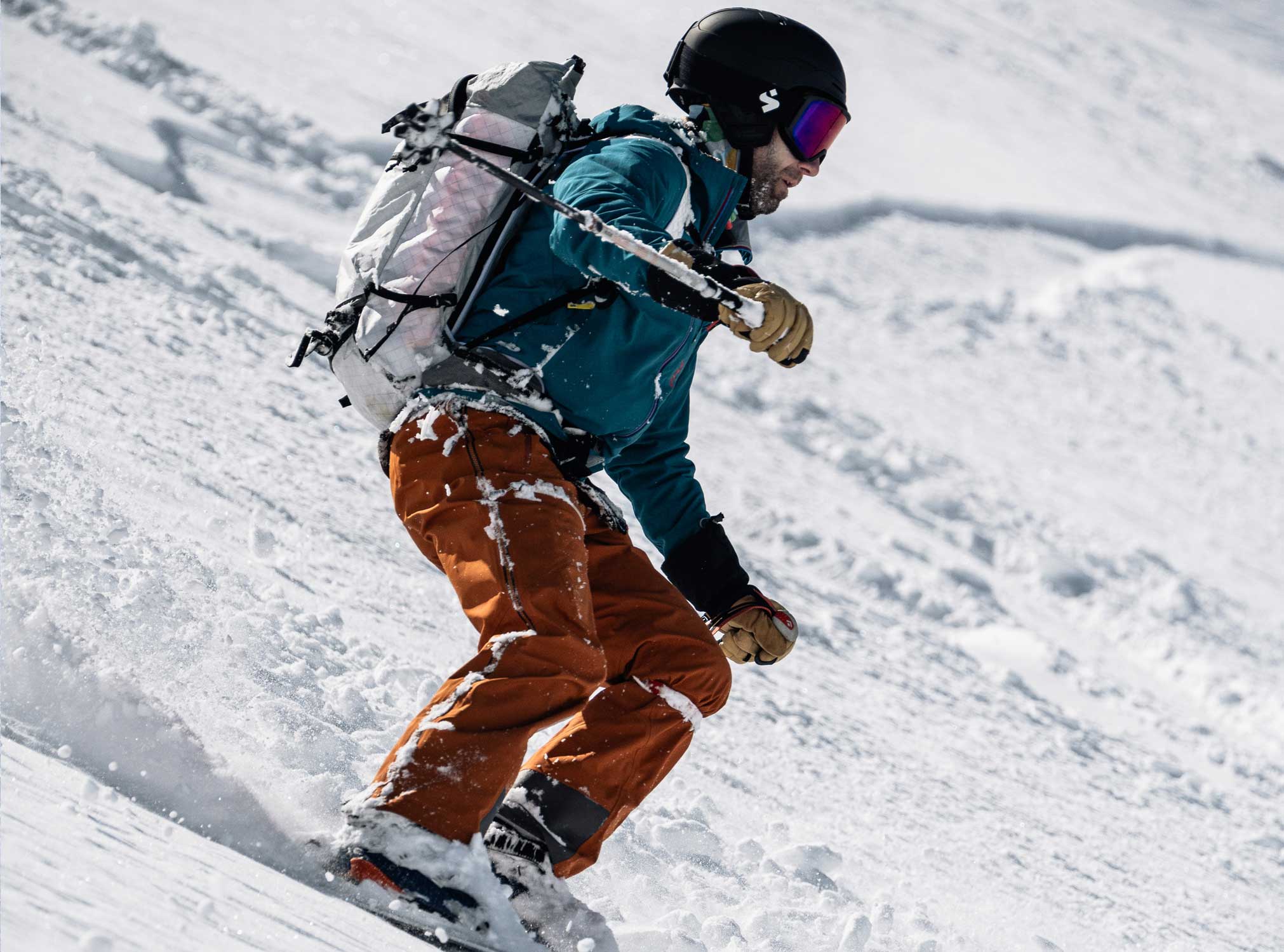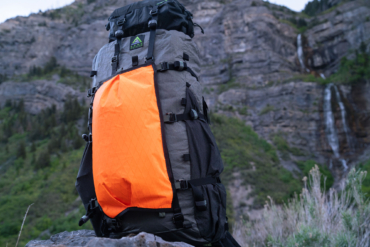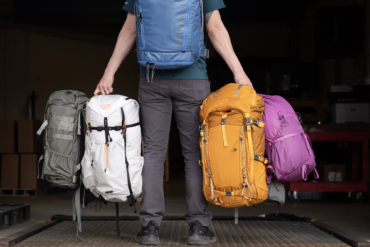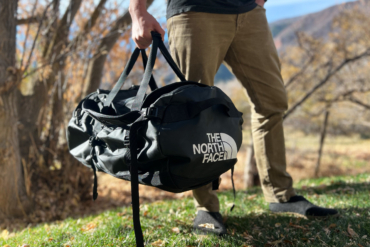The first time I went backpacking, my pack and gear weighed nearly 35 pounds. I clearly remember thinking there had to be a better way to experience the outdoors without having sore shoulders the next day. Years later, when I thru-hiked the PCT, my base weight clocked in at 10 pounds and stayed there for the next 2,650 miles.
Ultralight backpacking has slowly grabbed market share across the outdoor space in the past decade. What was once a niche cottage industry marketed through word of mouth on online forums has now broken out into the daylight.
REI has entered the ultralight market in a big way with the introduction of the Flash Air 50 Pack, a stripped-down version of its Flash series. As a longtime ultralight hiker, I was interested to see how it would stand up against the time-tested ultralight packs offered by Hyperlight Mountain Gear or Zpacks.
With a savvy design, UMHWPE fabric, and a stripped-down feature set, it’s got all the hallmarks of a great UL pack, but can it hang with the tried and true designs?
In short: The REI Co-op Flash Air 50 backpack is the everyman’s ultralight backpack. The pack is not the lightest on the market by a long shot, but it manages to shed weight compared to its predecessors. For those looking for comfort, reliability, and the ease of a big box store shopping experience, this may just be their ticket.
To see how the Flash Air 50 compares to the rest of our favorite packs, check out GearJunkie’s Best Ultralight Backpacks and Best Backpacking Backpacks Buyer’s Guides.
-
Comfort
7.0
-
Volume & Organization
7.0
-
Weight
8.0
-
Durability
6.0
- Weight: 1 lb., 15 oz.
- Volume: 50 L
- Material: UHMWPE ripstop nylon (87% nylon/13% polyethylene)
- Outside Storage: Two zippered hip belt pockets, two side water bottle pockets, two exterior side pockets, one front stash pocket, ice axe/trekking pole tether
- Hip Belt: Non-removable
- Frame Style: Spring steel stays
- Sizing: Small, medium, large
- BV500 Bear Can Fit: Inside vertically or strapped on top
Pros
- Pre-curved frame provides excellent comfort
- UHMWPE fabric is uber tough
- Water bottle pockets are front-angled and easy to snag
- Top Y-strap wrangles bulky items like bear canisters
- Compatible with REI Packmod accessories
Cons
- Back panel doesn't have the best ventilation
- Not fully waterproof design — will need other waterproofing solution
- Not the lightest option out there at nearly 2 pounds
REI Co-op Flash Air 50 Pack: Review
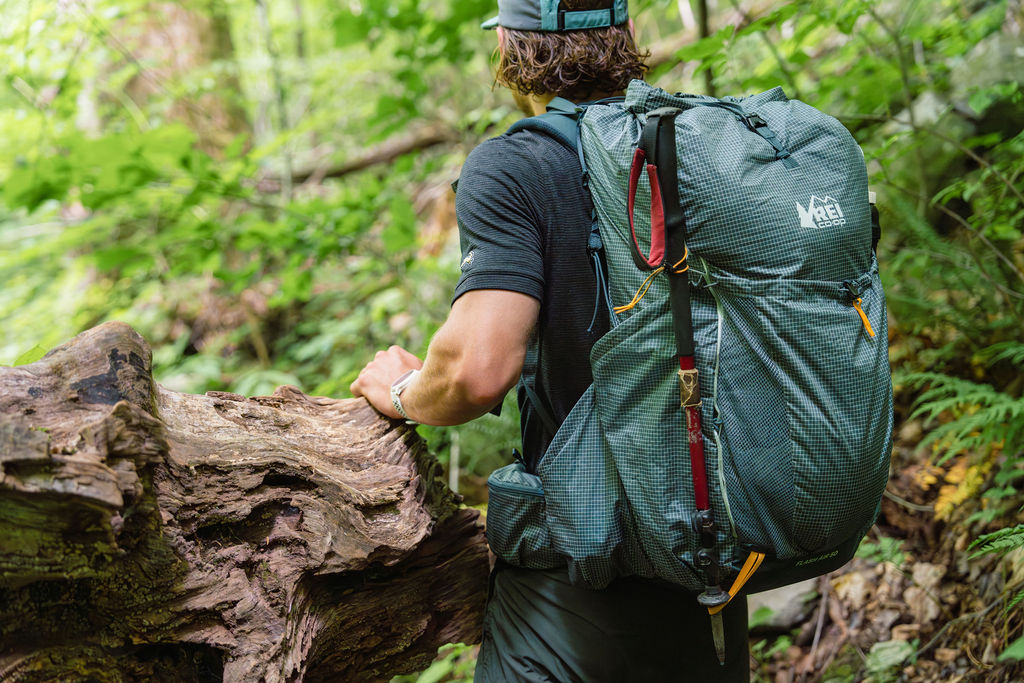
The pursuit of ultralight goes far beyond simply how much weight you carry. The true principle behind the pursuit is to maximize your enjoyment outdoors while taking a minimal amount of the lightest gear required to be safe for a given trip. Stripping away the excess, you are left with something utilitarian but functional that allows you to become more present in the outdoors.
The REI Co-op Flash Air 50 comes close to this ideal while not fully committing to stripping away all of the excess. Those familiar with REI’s Flash 55 pack will see many of their favorite features represented on the new Flash Air 50, along with a few new notable ones. But really, it’s the restraint to pile on the extras that keep this pack in the UL category.
A new roll-top lid offers compression and adjustment to the internal volume, while the top Y-strap helps store excess or bulky items such as bear canisters on top of the pack. The exterior pockets are large but oddly hard to access when the pack is tightly packed. There are daisy chains and attachment loops to lash ice axes and other gear to the exterior of the pack.
Otherwise, you’re left with a pretty spartan exterior that looks a lot like … many other ultralight packs these days.
I have largely used Hyperlite Mountain Gear packs for the past 10 years and have grown to love the utilitarian nature of the brand’s gear. Hyperlite and other early makers in the ultralight space design product lines with the basic premise that less is more. You won’t find all of the bells and whistles on a Hyperlite bag that you would on, say an Osprey Aether.
So, this would be the benchmark that I would test the new Flash Air against, and in order to test this pack, I set out to hike through what I consider North Carolina’s toughest terrain — the Linville Gorge Wilderness. With 23 miles and 4,500 feet of vert, two river crossings, and a healthy dose of overgrown trail, this route is tough on gear. I packed the bag up with my standard overnight kit and hit the trail early.
Field Notes: Comfort Is King
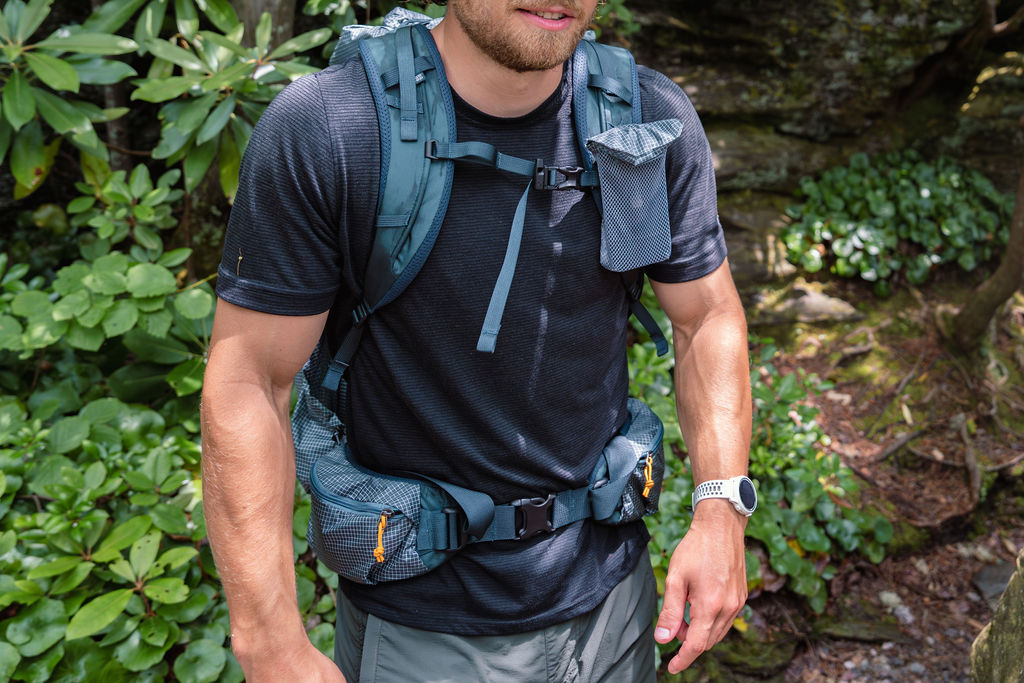
The true test of any backpack is comfort over a long day on the trail. In this department, the Flash Air 50 delivers in style. The hourglass-shaped frame hugs your back, while the shoulder straps are padded, though not bulky.
Due to its pre-curved design, the hip belt effortlessly hugs your hips and remains comfortable over steep terrain. While testing, I carried roughly 18 pounds in this pack, and I remember thinking I could easily add 10 more without compromising the comfort. Rated for loads up to 25 pounds, this backpack has plenty of capacity for average trips.
It’s a common misconception that you must trade comfort for weight when using ultralight gear. Even while climbing 1,000 feet in 2 miles, the Flash Air 50 felt secure and weighted on my hips. The adjustable load lifters were useful to pull the weight closer to my back halfway up the climb.
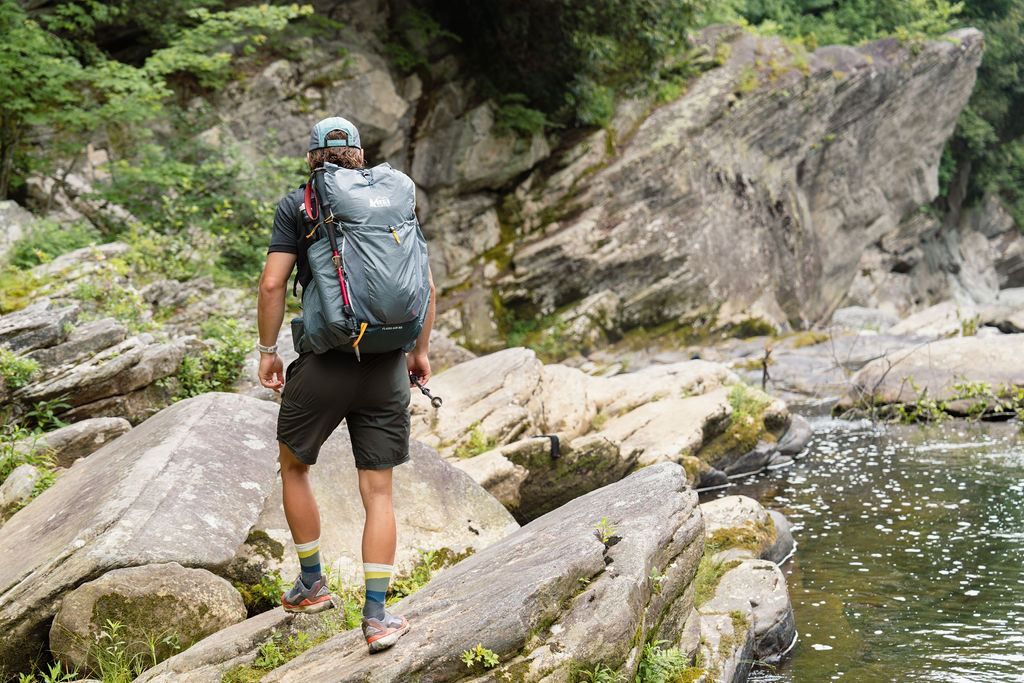
Unfortunately, the foam padding across the back did not ventilate as much as I would have liked, and my back definitely felt hot. However, it was much better than its competition in the Hyperlite Mountain Gear lineup, which offers zero breathability.
Near the halfway point of the hike, I descended to the Linville River, where I had to make a series of short rock hops to cross the water. As someone who enjoys scrambling across rocks on my adventures, this pack pleased me with its feel and kept weight close to my body.
Functional on the Move

When I hike, I like to eat and drink on the move, so having easy access to my water bottles and pockets that hold snacks is important. The Flash Air 50 has dedicated water bottle pockets, separate from its side pockets, a feature initially introduced on REI packs about a decade ago.
These sleeves are located directly behind the hip belt and in front of the side pockets, making it much easier to reach back and grab your bottle while moving. I found these pockets to be quite functional and was happy to see the hip belt pockets fit my phone, as well as plenty of snacks.
The Flash Air 50 also incorporates the REI Pack Mod System, which allows you to customize your pack by adding accessory pockets to the backpack. The shoulder strap mesh pocket is sized for a standard smartphone — however, its durability is questionable, and I found it to hang awkwardly while hiking.
The other small mesh pouches hang from the back of the pack and bounce around quite a bit. Both pack mods are removable.
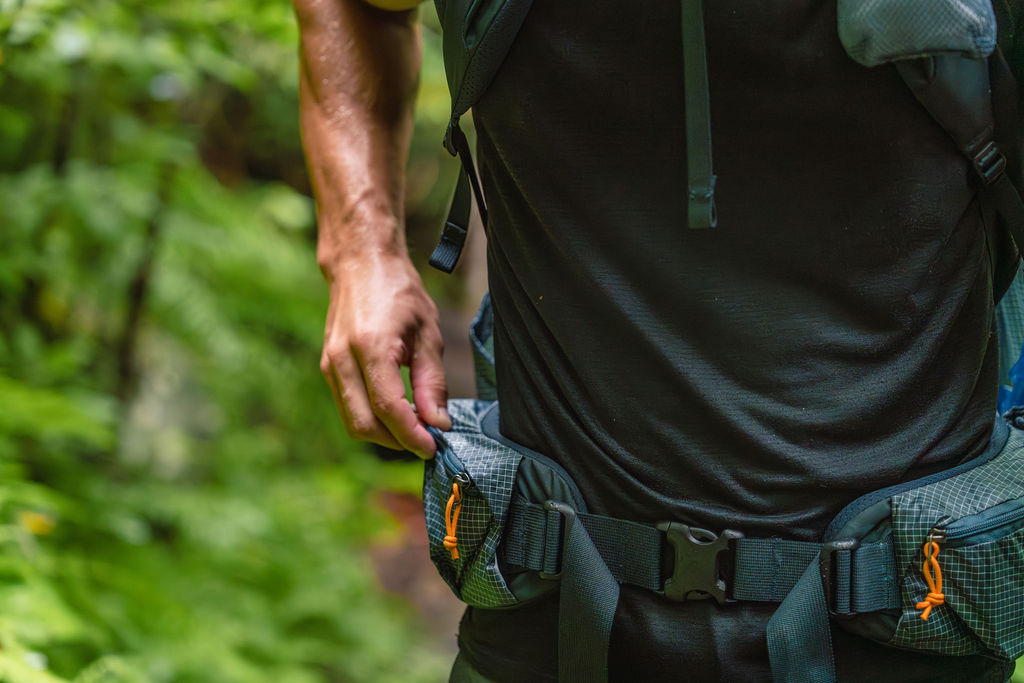
I typically hike with two trekking poles for both on-trail support and using them to erect my shelter at the end of the day. For testing purposes, I carried one pole attached to the Flash Air 50’s tool keeper. A small loop attached to the bottom of the pack holds your tools in place, while a cinch loop at the top secures them to the daisy chain.
Typically, if I have to carry my trekking poles, I simply toss them into the side pocket of the pack and secure them using the lateral cinch cords. While designed cleanly, I am unsure how practical this system plays out for normal use. The slight twist and movement of the poles hanging off the back of the pack were noticeable when moving quickly.
Not Impervious to Showers
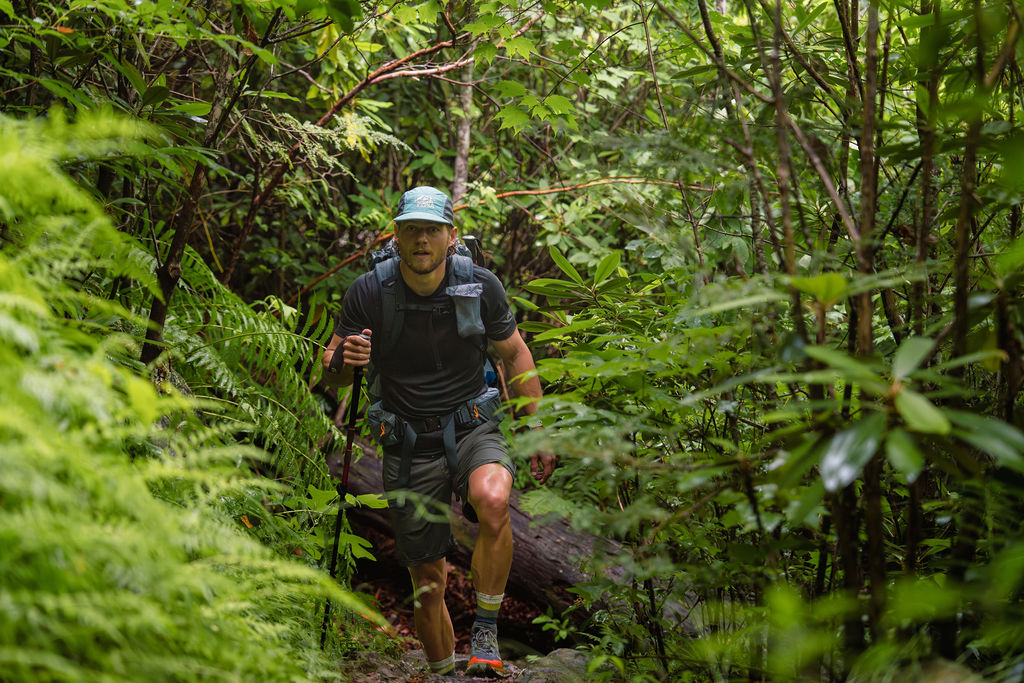
With just a few miles left to the car, the clouds that had been threatening a storm all day opened up in torrential rain, and all efforts to stay dry were useless. While I hoped the UHMWPE fabric would offer some water resistance, I later discovered a good amount of water had made it inside the pack.
I don’t know whether the water entered through the hydration port or soaked through the fabric. While the UHMWPE fabric is light and tough, it does not offer the same level of protection as, say, woven Dyneema used in the Hyperlite Mountain Gear packs I have used.
Users should expect to use a waterproof pack cover or line the inside of the pack with a trash bag or other waterproof material. On a positive note, the shoulder straps and back padding breathed well enough to dry quickly and didn’t feel heavy or soaked with water.
REI Co-op Flash Air Pack: Conclusion
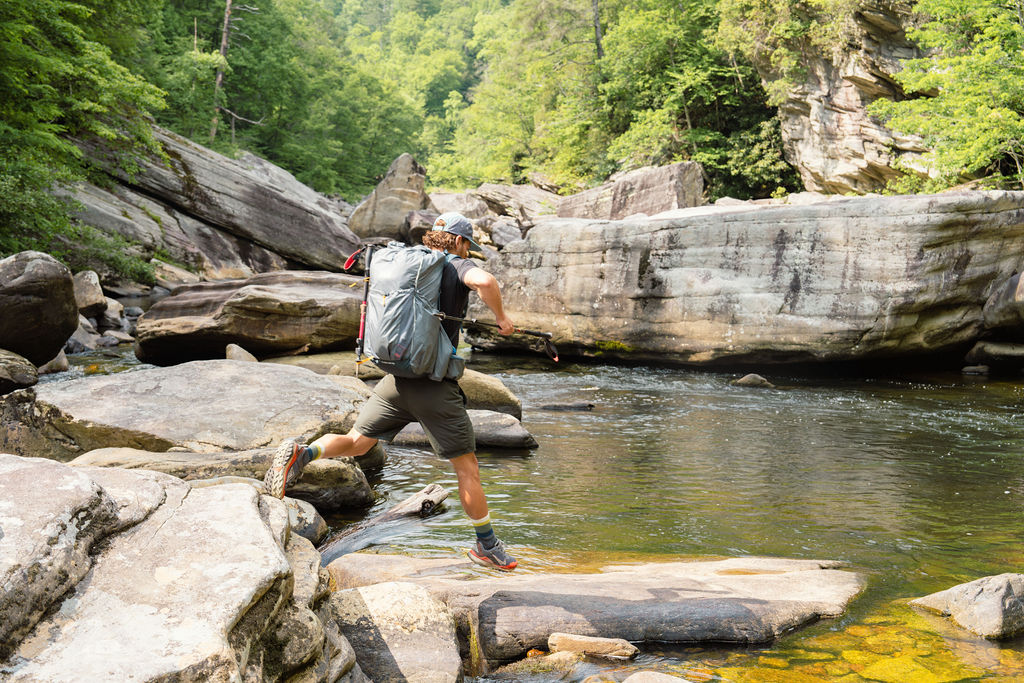
In conclusion, the REI Co-op Flash Air 50 backpack strikes a commendable balance between ultralight principles and mass-market application. By making smart design choices and selecting materials carefully, REI has created a pack that meets the weight requirement to be considered “UL” while still offering the familiar bells and whistles that customers have come to expect.
True ultralight purists will likely balk at the weight (nearly 10 ounces heavier than the Zpacks Arc Haul 50L), while those who are coming from traditional packs such as the Osprey Atmos 50L will be well rewarded with the nearly 2.4 pounds of weight savings.
With a price of $299, the Flash Air 50 finds itself directly competing with the best and most established packs in the ultralight category. With thru-hikers hitting the long trails this summer, time will tell if the bag has what it takes to earn its spot as a respected option to consider. But my best guess is that we’ll see plenty of Flash Air 50s hitting terminuses across the country.
